The essential kinds are three – full-stack, micro-framework and asynchronous. Engineers can choose them dependent on venture necessities and individual inclinations. How about we talk about the types of Top Python Web Application Frameworks to Use in 2020.
Full-Stack
These structures furnish designers with full help. Full-stack structures resemble a one-stop-shop that incorporates everything – directly from structure generators to frame approval and format designs.
Micro-Framework
As their name recommends, a miniaturized scale structure is light-weight. It doesn’t accompany extra highlights or functionalities. Along these lines, on the off chance that you are searching for structure approval, database deliberation layer, venture explicit instruments, and libraries, you’d be disillusioned.
In any case, in the event that you have to physically include enormous measures of code and extra necessities, small scale systems are your most solid option.
Asynchronous
This one is moderately later. This system is as small scale structures, yet empowers engineers to deal with simultaneous associations in mass. asynchronous systems feed on Python’s asyncio library.
Django
 Type- Full Stack Framework
Type- Full Stack Framework
Being an open-source top python system, Django empowers the clients to rapidly build up a web application with a natural and consistent structure. It contains the latest structuring designs and lively features which makes the improvement procedure simple and adaptable. Its gigantic library of most recent highlights helps the engineers in embraced the customer’s approval, URL coordinating, just as database outline migration.
The code reusability highlight of Django and its exceptional features are generally utilized by engineers for growing profoundly extensible locales that can undoubtedly manage the massive traffic. The most well-known instances of web applications that have been made utilizing Django are Instagram and Pinterest.
- Django is used by designers when they need to create applications in a shorter timeframe.
- It helps engineers to ward off different security issues like SQL imbuement, cross-site request fake, clickjacking, and cross-site scripting during the advancement procedure.
- Django likewise manages different Web advancement assignments like customer affirmation, RSS channels, content association, and some more.
- From content organization to manufacture of the wide scope of things, Django has been used by various associations, government offices, and affiliations. comprehensively.
Key highlights of Django
- Simple and incredible URL framework
- Allows the engineers to characterize designs for the URL
- In-fabricated confirmation framework
- Based on OOP, which offers the best information stockpiling and recuperation
CherryPy
 Type- Micro Framework
Type- Micro Framework
Despite the fact that the system is ten years of age, yet it has demonstrated itself to be one of the fastest and stable open-source Python web Application improvement structure. It has its own multi-hung server and it can without much of a stretch work on any working stage that is upheld by Python.
This moderate structure permits the designers to get to information with any sort of innovation, just as it can play out any assignment that a system is prepared to do, similar to document transfer, treats, static, care of meetings and so on. With CherryPy, engineers can make web applications like applications created utilizing object-situated python web Application programming. This outcome in application improvement with little source codes.
- It comes with versatile module framework.
- Contains a versatile module structure and astounding plan
- Operates on 2.7+, 3.5+, Jython, PyPy, and Android
Key Features of CherryPy
- Multiple HTTP servers can be effortlessly worked without a moment’s delay
- Contains worked in apparatuses for storing, validation, encoding, meetings and some more
- Contains worked in testing, profiling, and inclusion support
Pyramid
 Type- Full Stack Framework
Type- Full Stack Framework
An open-source and third most-utilized structure, Pyramid is a python web application system, which functions admirably with both huge and little applications. The primary focal point of this system is to proceed however much as could be expected with the least multifaceted nature. Running on Python 3, Pyramid can without much of a stretch stay aware of most recent innovative updates and enhancements. The most enthralling component of Pyramid is that it can work effectively with full-scale applications.
- Single-archived applications
- Have versatile endorsement and approval
- Templating and asset subtleties
Key Features of the Pyramid
- Supports adaptable endorsement and confirmation
- Supports approval and age of HTML structure
- Routes design based URL mapping
- Supports testing and far-reaching information documentation
Bottle
 Type- Micro Framework
Type- Micro Framework
Like CherryPy, Bottle is moderate, as well. It was made for building web APIs. In view of its little size, the bottle allows in each web programming to be practiced in an unmarried source report without conditions, other than that on the python notable library.
It’s simple and quick miniaturized scale structure incorporates connector support for 0.33-festival format motors. This aside, it also helps WSGI/HTTP servers. With an inherent HTTP server and module support for differed databases, bottle grants get to frame records, HTTP metadata, treats and document transfers and offer demand dispatching courses that incorporate URL-parameter help.
Generally speaking, it is a lightweight structure, which is extremely smooth to utilize and allows building oversimplified applications for individual use. It is perfect for recognizing the association of web structures and prototyping and perfect for building tranquil contributions. No wonder Netflix executes Bottle for its net interfaces!
- HTTP Server
- Support for various database
- Supports URL parameter
- Allows clients to access structure information and other HTTP related meta-data.
Key Features of Bottle
- Lightweight
- Moderation
- Backing for outsider layout motor
- Worked in HTTP server
- Backing for WSHI/HTTP servers
- Backing for database modules
- Access to frame information, treats, record transfer, and HTTP metadata
- Solicitation dispatching courses with URL-parameter support
TurboGears
 Type- Full Stack Framework
Type- Full Stack Framework
TurboGears is an open-source, records-driven full-stack web application structure. It’s based on heaps of middleware and loads of libraries and blends this with the amazing added substances of various python systems.
TurboGears allows you to immediately widen extensible realities pushed net projects. It accompanies a client lovely templating motor and an incredible and adaptable ORM. Further to extraordinary format frameworks that make originators’ lives simpler, TurboGears offers a lot of malleability, hearty Guide of totals, an incredible ORM, and reusable pieces.
 Check this in-depth Top 10 Python Programming Examples Check this in-depth Top 10 Python Programming Examples |
|---|
TurboGears grants net manufacturers to streamline web utility improvement using various JavaScript advancement apparatuses. You may expand web applications with the help of components comprehensive of SQLAlchemy, Repoze, WebOb, and Genshi, a mess snappier than other current structures. It underpins unmistakable databases and net servers like arches.
Key Features of TurboGears
- MVC-Style Architecture
- PasteScript Templates
- Different Database Support
- Function Decorator
- Pylon Support
- Cross-Platform OS
CubicWeb
Type- Full Stack Framework
CubicWeb is a semantic, free, and open-source python net structure that urges modelers to profitably build web applications with the guide of reusing pieces alluded to as 3-d shapes, and following the striking part sorted out game plan benchmarks. It’s a normal reaction for semantic net application progress which propels reusability, best, and productivity.
Considering the records form, CubicWeb requires to have the identical described, so as to gather reasonable programming. Explicit strong shapes are then blended for making a case with the help of a database, a web server, and some design records.
Various shapes are bunched together to make an occasion utilizing a database, a web server and a couple of design documents. With regards to semantic web application advancement that bespeaks quality, proficiency, and reusability, this structure is perfect for start to finish arrangements. The structure accompanies an inquiry language known as RQL which works in a manner like W3C’s SPARQL. This implanting rearranges information related inquiries.
    |
|---|
Be that as it may, so as to grow completely practical web applications, CubicWeb needs to have its information model characterized. It further utilizes the selection view system to create self-loader XHTML/XML/JSON/content and for a reusable segments library.
Key Features of CubicWeb
- Agenda to support CubicWeb
- Reusable Components
- OWL and RDF Support
- RQL Embedding
- Different Database Support
- Great Security Workflow
Dash
Type- Micro Framework
Run is one more open-supply smaller scale system that is only intended for developing scientific web programming. Built on flagon, plotly.js, respond and ReactJS, this current one’s insights researcher most loved gadget since it doesn’t request parts data of the mechanics of web improvement.
All Dash web applications are go-stage appropriate and cell-equipped. Any web application built the use of this system has parts – an arrangement which portrays how the appearance of the application, and usefulness, which depicts its intuitiveness. These are web servers that run cups and use HTTP solicitations to speak with JSON parcels. The frontend of such bundles utilizes ReactJS. Run gives a more noteworthy level of customization which makes it simple to fabricate Python dashboards. Its simple interface is advantageous in rendering UI controls on expense resources as dropdowns, charts, and sliders. This python structure likewise empowers HTML guidelines to create HTML content.
Key Features of Dash
- Basic UI Low Demand for Boilerplate Code
- Mistake Loading Layout
- LDAP Integration
- Adaptability
- Module Support
- URL Routing
Tornado
Type- Asynchronous Framework
Tornado is an open-source web system as well as a non-blocking web server similarly to the offbeat system administration library. It is worked to be adaptable and to explicitly deal with non-concurrent forms.
This system can utilize non-blocking I/O to scale to a huge number of open associations. Therefore, it is deal for WebSockets, long surveying, and web applications that need a seemingly perpetual association for every client. Likewise, it is perfect for settling the C10k issue.
Tornado further accompanies an in-manufactured HTTP server, which permits it to serve the applications. For application improvement that requests superior and backing for simultaneous utilization, this one phenomenal Python structure.
Key Features of Tornado
- Agenda to root for Tornado
- Non-Blocking HTTP Client
- Continuous Services
- Excellent Performance
- Excellent Output
- Web Templating
- Backing for User Authentication
- Backing for Third-Party Authentication and Authorization
- Translation and Localization Support
Flask
Type- Micro Framework
This micro framework system accompanies an implicit improvement server and debugger. In any case, it doesn’t mean any inherent database connection. To redress, the Flask-SQL Alchemy bundle interfaces web applications based on Flask to a SQL database utilizing just the database URL.
    |
|---|
Also, this one is BSD-authorized and underpins unit testing. It permits setting up secure customer side meetings and is totally perfect with Google App Engine. Displayed in the lines of Sinarta Ruby system, Flask requires the Werkzeug WGSI toolbox and Jinja2 layout. It is lightweight and features a high level of flexibility. The best part- designers who use Flask can appreciate building vigorous web applications utilizing any sort of augmentations.
Key Features of Flask
- Agenda to applaud Flask
- Unicode-based
- Worked in Debugger
- Worked in Development Server
- Jinja2 Templating
- WSGI 1.0 consistence
- Module Support for any ORM
- Unit Testing Support
- Treat Support for Client-Side Sessions
- HTTP Request Handling
- Serene Request Dispatching
Giotto
Type- Full Stack Framework
Giotto is selective for web applications worked in functional styles. This full-stack structure is an inspo based on the idea of Model, View, and Controllers so web engineers, planners, and framework administrators can freely chip away at it.
It accompanies controller modules that permit designers to make applications on the web, IRC and direction line. The Giotto system has been worked with the end goal making codes simple to oversee over longer timeframes. This is done so it turns out to be anything but difficult to send the codes over the long haul. In further includes an implicit reserve and supports for Memcache and Redis, the in-memory information stores.
Key Features of Giotto
- Agenda to root for Giotto
- Compact Code
- Conventional Models and Views
- Numerous Controllers that are Pluggable
- Programmed URL Routing
- SQLAlchemy for Database Persistence
- Utilitarian CRUD Patterns
- Memcache and Redis Support
- HTML with Jinja2
- Peaceful UI
- Muck Functionality
Pyramid
Type- Full Stack Framework
This one is a super system that can settle for the benefit of the client. Be that as it may, the last needs to befit the system’s perspective, so it doesn’t wind up in money of suppositions. As the web application develops, Pyramids quits deciding. Keeping that in mind, it generally targets accomplishing the fullest with negligible unpredictability.
The system is appropriate for mainly huge scope web applications. It is ideal for developing web applications, for example, CMS. It is likewise perfect for prototyping ideas, and dealing with API extends viably. The pyramid is lightweight, straightforward and quality-driven, which makes it all more engaging.
Additionally, it conveys the most extreme adaptability with regards to validation and approval. Its security game plans are dependable and rearrange the way toward setting up and getting to control records. This is one of its most attractive highlights. Pyramid’s capacities can additionally be expanded utilizing assets according to prerequisites.
Another, interesting highlight; about this full-stack structure is its Traversal system which empowers URLs to be mapped to code and makes creating RESTful APIs basic. Tech goliaths like Mozilla, DropBox, SurveyMonkey, and Yelp are known to use its mind-boggling highlights.
Key Features of the Pyramid
- Agenda to applaud Pyramid
- Predicates and Renderers
- Templating and Asset Specifications
- Traversal Framework for URL to Code Mapping
- Single-File Applications
- Adaptable Authentication and Authorization
- Lightweight
- Capacity Decorators


Niketan Sharma is the CTO of Nimble AppGenie, a prominent website and mobile app development company in the USA that is delivering excellence with a commitment to boosting business growth & maximizing customer satisfaction. He is a highly motivated individual who helps SMEs and startups grow in this dynamic market with the latest technology and innovation.
Table of Contents




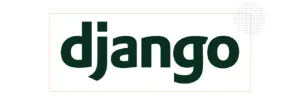 Type- Full Stack Framework
Type- Full Stack Framework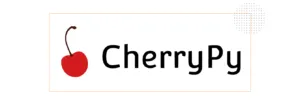 Type- Micro Framework
Type- Micro Framework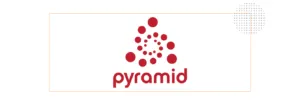 Type- Full Stack Framework
Type- Full Stack Framework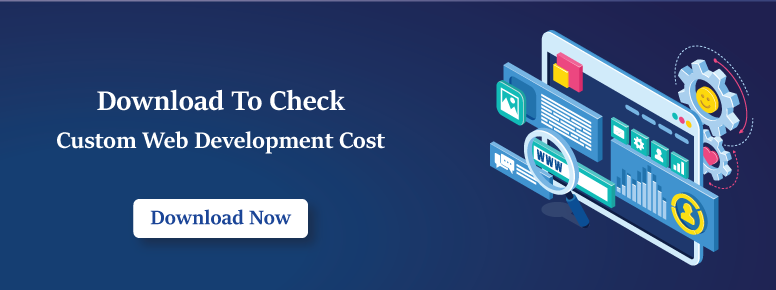
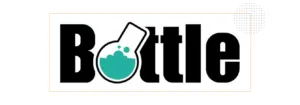 Type- Micro Framework
Type- Micro Framework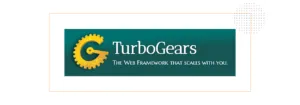 Type- Full Stack Framework
Type- Full Stack Framework







No Comments
Comments are closed.